#mantón de Manila
Explore tagged Tumblr posts
Text
fun fact to those who don’t know! agnea’s outfit is actually what some female flamenco dances wear while performing:
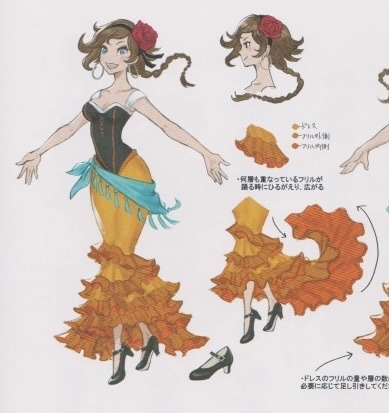
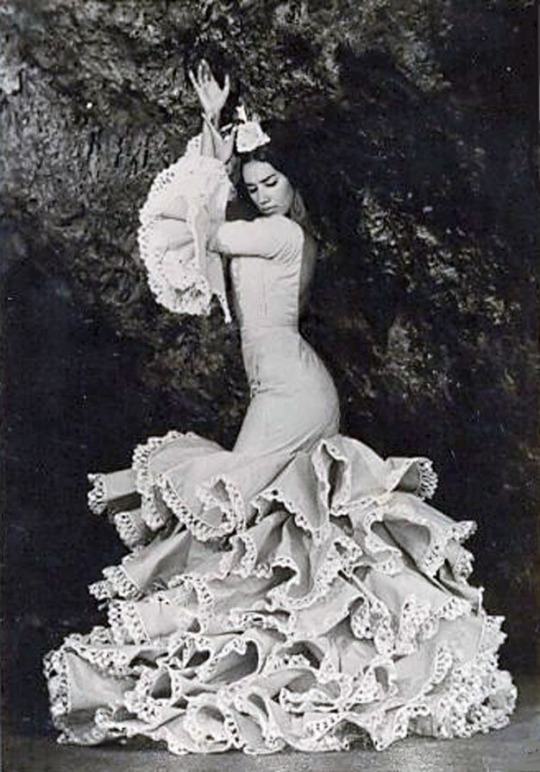

of course there are variations with the way to dress (some garments are like agnea’s some are more “casual”) because that’s just how the dance arts are. there is no definitive way to dress in a dance style. but i find it really really cool that a JRPG protagonist makes use of a mixture of Romani cultural expression with musical influences from Andalucía in Spain, a region that also has, to this day, a lot of Arab and Muslim influences.
she is wearing a shawl or mantón too, which some bailaoras also use:
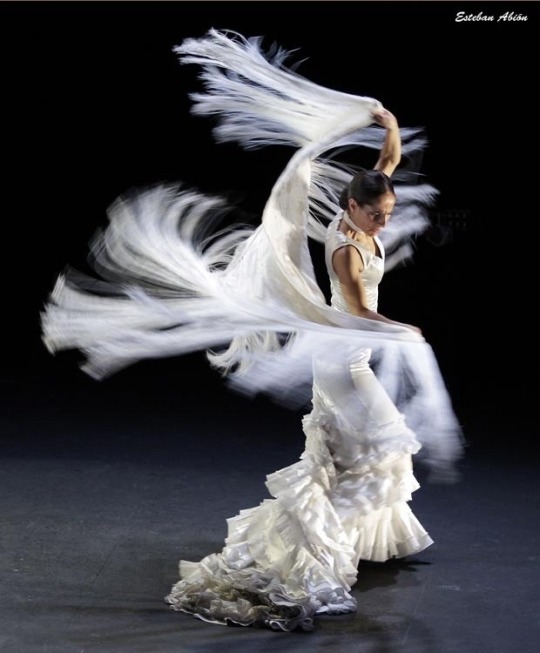
according to wikipedia (i love wikipedia <3) the most traditional/frequent shawls used in flamenco are mantones de Manila which are originally chinese but came to Spain through the Philippines’ capital during spanish conquest period. they are also not exclusive to Andalucía, as it spread through Latin America too. mantones de Manila are made of silk and have colorful patterns, but i assume the artist rather chose a simpler design in order for more clarity when sprite work came, because this is how they look:
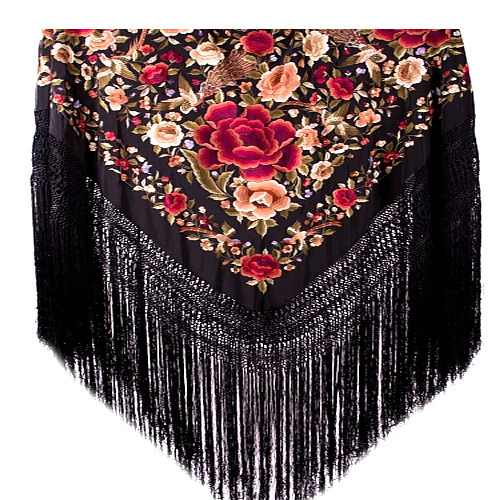

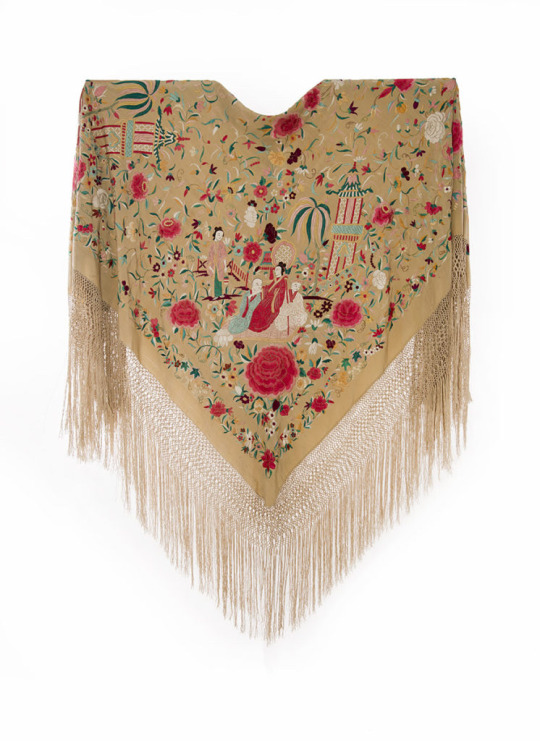
pretty complicated to portray through pixels! also they aren’t typically wrapped to the waist but are rather worn over the shoulders. honestly i kinda wish we could get some sort of animation where agnea dances flamenco, since the movements are pretty understandably complicated to capture in the octopath pixel style.
some more wikipedia links, if you wanna read more about the topic:
flamenco as a musical genre
general information about Andalucía (from history to political order)
104 notes
·
View notes
Text

Mantón de Manila
ARTIST: Artist unrecorded
DATE: 1950-1960
PLACE MADE: Spain, Europe
MEDIUM: Silk
4 notes
·
View notes
Text

Afuera
Caminas por la casa de la memoria. Vas ordenando las habitaciones, cambiando los objetos de lugar, cerrando las cortinas del salón donde todos los soles son hirientes. Cuando nada se mueve del lugar que tus manos le asignan, cierras las puertas y ventanas con dulzura, sales al espacio exterior de la noche baldía y aúllas mirando a la luna, en el jardín que borran las malezas, temblando.
La marioneta
Te mueves para complacer a los otros, como todos los desamparados. Harás cualquier papel menos el propio. Serás la abuela rezando junto a la ventana un rosario hecho con bolitas de ojos que vieron al Señor; serás la madre que antes de envejecer se dobló como un traje de fiesta y se guardó en un cajón, para que no la sacasen a vivir, serás la hermana que murió con rebeldía, esperando inútilmente que cambiasen las leyes de la Tierra; no serás la mujer que gobierna tus hilos de marioneta y te retira del escenario cuando termina la función y te canta canciones de cuna y te acuesta, con piedad, junto a sus hijos.
Borrar las huellas
Avanzas en la casa de la mañana borrando huellas: el roce de los labios sobre los vasos, la marca de las suelas sobre pisos brillantes, el peso y la respiración de los cuerpos en las sábanas que se retiran. Luego te miras en el espejo del cuarto y te limpias la cara con las manos. En espejada luna serena sólo esas manos quedan, inmortales, ensayando los gestos que hacen al mundo volver a sus principios.
Transparencia
Todos los atardeceres te sientas en el patio de la casa. Si alguien te acompañara vería como tu cuerpo se vuelve transparente al compás de la sombra. Primero surge un mapa encendido de venas y de vísceras, luego, más abajo, una población de huesos huecos por donde el viento frío corre como un golpe de música. Sonríes y levantas un brazo en la noche incipiente. Unos minutos más y se apagará el resplandor del hueso iluminado por canciones remotas y ocultará la piel el color de tu sangre. Cuando todo concluye, guardas la silla bajo el alero y vuelves a la cocina, llevándote el secreto de la transparencia del mundo.
Ciertas herencias
Acaricias tus herencias inofensivas, sedosas como una piel: una almohada de terciopelo donde la oración de la abuela se arrodillaba, una trenza roja que vivió en tu cabeza de quince años, insolente como una carcajada en el lugar de los muertos, un mantón de Manila que tus antepasadas se ponían para cantar. Y la almohada se corre bruscamente para mostrarte un pozo desconocido bajo tu cuerpo, y la trenza te rodea el cuello, mordiéndote como una boca de amante, y el mantón te envuelve y te la lleva, enseñándote alas para salir al mundo.
Carlos V.
2 notes
·
View notes
Text
Well, many of those "traditional costumes" were made up in (or starting at) the 18th Century by some noble guy in an effort to help create a national identity. Just like jotas.
And traditionally too, rich people have always liked to copy poor people's styles (best exemple I can think of is Marie Antoinette and her Polonaise style skirts). Also la Duquesa de Alba copying the now called "goyesca" style. It still happens today, with posh brands copying punk styles to sell broken t-shirts for 500 €.
It would be interesting to look closer into who designed which costumes and where, but these couple of ideas probably show up somewhere.
Also, these things come back too. Someone creates an idea of how the dress should look like (the rich version), and the poor people want to copy it to the best of their ability. Some 100 years have passed in between, adaptations are made, this and that. Which brings us to the fact that some costumes were clearly invented in the 18th Century and others are from the 19th Century and others are from the 20th Century (and you can spot some fashions on the moment where they were created sometimes. You mention falleras in your tags, it certainly looks from the age where it was invented: 18th-19th Century).
In Cáceres, for instance, the costume for the lavanderas fair "fiesta del febrero" (carnavales) is a classic lavandera working class simple dress with an apron. This fair was brought back some 15-20 years ago after the local chronist interviewed old local washer women about this day of celebration that they (the washer women) organised themselves and pay for themselves in the first half of the 20th Century. And now their traditional dress is a carbon copy dress of one concrete style of worker women from the beginning of the 20th Century. Don't you have pictures of your grandmother and great-grandmother dressed like this?

If you compare it to the usual Extremadurian/Caceres costume, there are 200 years of difference between the styles. And in any case, the usual costume also has some regalia version and some worker's version. Looking closely to some regalia version, it's like a puzzle of different good quality things put together. Like the skirt and the blouse and the scarf don't match. They are all luxurious on their own, but of different styles.

Probably someone designed a rich style inspired by the worker style, and then the workers decided to copy it back, but according to their own money and skill, which is buying parts and pieces little by little or reusing second hand clothes. Even now, just the fabric of skirt of an Extremadurian costume is about 300 €. On top of that, you have to sew it. The scarfs may be about 100 € or more (a mantón de manila is well over 200 €, for reference) (the Extremadurian ones are not mantones de manila, they're pañuelos de mil colores, still expensive though). Even now, people of certain social straits cannot buy or even make these dresses (like myself).
If you look at the picture with the regalia version I put up there, the blouse is covered by the scarf in a very worker way (compare with the lavanderas too). However, the blouse and the overall style of the costume is too rich, similar to the goyesca cut (19th Century, picture below). If you have money for a goyesca dress, you have money for a coat or a cape, you wouldn't wear a scarf. Unless the scarf is one of the richest items you have at home and you don't really have a coat/cape.

Also, why would you have an apron? Just for decoration? Or is it so that the skirt doesn't get dirty? If you are given the skirt by your patron because it went out of fashion, you have the skirt. And then you have a good blouse, and you cover it with a good scarf.
This is just a (very messily explained) theory of how traditional costumes are a thing that started in the 18th Century and how variations of it may appear and change over the years. There is probably better research than this somewhere and if you investigate a bit here and there, I bet my ass that some of those "worker class looks" are from the end of the 19th Century-1950s (or even more modern, as the lavanderas), whereas the fancier ones are older.
tbh i think theres something to be said about the survival of traditional dresses in different regions and how some regions' traditional dresses are from the higher classes and other regions' are from the lower classes
#folklore#I accept comments on this theory I just pulled from my ass based on observation and light research
3 notes
·
View notes
Photo

Manola
Colita
1982
Photograph
10 notes
·
View notes
Photo

Night Life Tales Magazine, cover by Zoe Mozert (1934)
82 notes
·
View notes
Photo

‘Mantón de Manila’
Things aren’t great... well, anywhere.
So I dug out some markers and colour pens and tried to do something experimental and bold, but indulgent nonetheless: Holmes wearing a silk shawl based on a Chinese piece currently in The MET museum.
I’ll resume posting and working on the Kiss Art February challenge at some point, but for now I needed to do something purely for myself.
#Sherlock Holmes#traditional art#my art#Granada Sherlock Holmes#nb Holmes#Jeremy Brett#Manila shawl#fashion history
737 notes
·
View notes
Text
i love when languages do the thing when they name stuff after other places in the world. like, from the top of my head, in spanish we have tortilla francesa (omelette, literally 'french tortilla'), funda nórdica (duvet cover, literally 'nordic cover'), coles de bruselas (brussels sprout, literally 'brussels cabbage'), ensaladilla rusa (olivier salad, literally 'little russian salad'), montaña rusa (rollercoaster, literally 'russian mountain'), mantón de manila (manila shawl), napolitana (pain au chocolat, literally 'from naples'), berlina (berliner pfannkuchen, literally 'from berlin'), and probably there's more i'm forgetting.
i would love to see some examples in other languages!!
165 notes
·
View notes
Text





Donde vas con mantón de Manila...
#donde vas con vestido chines#if anyone recognizes the song you get a kiss in the mouth#inti#dres#drag race españa#rpdr spain
14 notes
·
View notes
Text
La tuba, bebida refrescante con arraigo colimense.
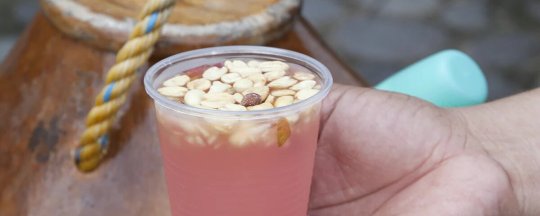
La tuba es una bebida tradicional de Colima, pero tiene su origen en las Filipinas, desde donde llegó a México gracias a los viajes del Galeón de Manila.
Te contamos todo sobre la tuba, una bebida tradicional de Colima.
Orígenes de la tuba
En el siglo XVI el Galeón de Manila tocaba las playas colimenses con el fin de proveerse de limón —tan necesario para evitar el escorbuto entre sus pasajeros— también desembarcaba a grupos de trabajadores de las Filipinas que venían a cultivar los campos cañeros y arroceros de la región.
El intercambio de costumbres entre aquel país y el nuestro, hermanados por España, pronto dio sus frutos.
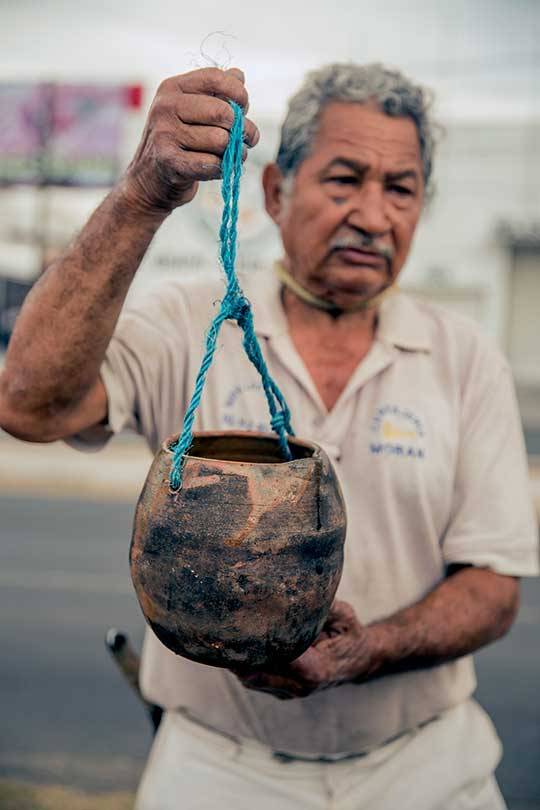
De acá les mandamos lo siguiente:
chocolate
tamales
tortillas
pozole
Y de allá nos enriquecieron, entre otras cosas, con “el mantón de Manila” y la tuba, palabra que viene del idioma filipino y que se refiere a una bebida nutritiva y refrescante extraída de la espiga de flores de la palma de coco.
Crónica de un tubero
Colima es un estado pequeño en superficie pero grande en tradiciones, una de las cuales es la extracción y comercialización de la tuba.
Don Cándido Zamora Verduzco, “tubero” de oficio desde los doce años, nos recibió en su casa, en las afueras de la ciudad de Colima, y sentados bajo la sombra de las palmeras de su pequeño huerto nos fue contando que fueron sus tíos quienes le enseñaron dicho oficio.

Para extraer la tuba primero hay que escoger la palmera “que tenga su edad”, que es cuando el “elote” (la espiga en flor cubierta por dos hojas grandes y gruesas) está a punto de abrir.
En la palma real india de color amarillo este brote madura a los seis años, en tanto que en la palma real verde lo hace a los ocho, aunque actualmente los agrónomos las hacen producir a los tres o cuatro años.
Don Cándido nos invitó a escoger una palmera para mostrarnos cómo es el proceso de la extracción de la tuba desde el principio.
Cuando la encontramos empezó alegremente a machetear el tronco, haciendo unos escalones para poder subir, y con una cuerda aseguró su cuerpo a la palmera.

Nos dijo que es peligroso subirse en tiempo de lluvias, pues el tronco se vuelve muy resbaloso; él nunca ha tenido una caída: “si te nace del alma trabajar en esto, pues con cuidado”.
Cómo se extrae
Cuando logró llegar a la parte de arriba nos mostró los tres “elotes”, dos chicos y el mayor, como de medio metro.
“Llega el día que abre”, pero antes de que esto suceda, en periodo tierno, como a los dos meses de edad, se amarra con un mecate para evitar que abra, y a los diez días se desata, se le quita el forro, es decir las dos hojas que cubren la espiga; ésta se lía suavemente y se guía torciéndose hacia abajo y amarrando la punta del mecate a una hoja de la palmera para mantenerla tensa, entonces se empieza a bajar.
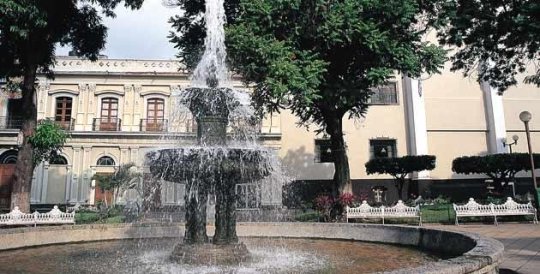
“Cada día se le da un jaloncito para evitar que se quiebre, hay unas muy dóciles que se dejan bajar de una sola vez y otras que tienen la garganta corta y necesitan varios jalones; como en seis o siete días se bajan”.
Luego de esta demostración, don Cándido descendió ágilmente y seguimos nuestro interesante paseo.
Cuando encontró la palmera adecuada para seguir enseñándonos el proceso, tomó una de las ollas de barro que tiene destinadas a la recolección de la tuba y en un abrir y cerrar de ojos ya estaba arriba, listo para mostrarnos el paso siguiente en una espiga recién bajada.

Le desató la punta y de un tajo de cuchillo le cortó un pequeño trozo: “hay que hacer un tratamiento: darle una calada para ver si da tuba. Las palmeras son sumamente diferentes, las ‘lecheritas’ dan hasta dos litros y medio al día, a esas hasta besos les damos, pero las secas no dan ni pa’ mojarnos la boca”.
Y diciendo lo anterior metió la punta de la espiga a la boca de la olla, y la fijó a las palapas, cubriéndola después con un lienzo para evitar que los insectos y los pájaros se bebieran el líquido recién salido de la espiga.
Sonriendo desde arriba nos comentó: “la forma anterior de nuestros antepasados era amarrarle un porrón de barro como esta olla, pero en la actualidad empleamos con más frecuencia recipientes ligeros, de plástico”.
Luego nos explicó que las palmeras hembras se distinguen de las palmeras machos sólo al calarlas, pues únicamente las hembras destilan tuba.
La tuba conserva sus características de color y sabor durante las dos horas después de ser recogida, pero a las cinco horas ya se fermenta.
Cuando esto pasa se deja en reposo ocho días para usarla como vinagre de excelente calidad, empleado, entre otras cosas, para cocinar la birria y para encurtir la verdura que se le pone a la famosa sopa de pan que se sirve en las grandes fiestas, como bodas y bautizos.
En la ciudad de Colima, especialmente en los portales del centro y en las gasolinerías, se ven hombres vestidos con camisa y pantalón blancos que cargan sobre los hombros un palo en cuyo extremo cuelga de un mecate un gran bule, llamado balsa, y en el otro una cubeta con vasos, nueces y cacahuates: son algunos de los tuberos que andan por la capital vendiendo la deliciosa tuba.
Fuente : https://n9.cl/nps596
2 notes
·
View notes
Photo

Frida era su tela y su paleta. Del mismo modo que reflejaba su rostro en un gran número de sus cuadros, ella misma se consideraba también un objeto artístico, alguien que podía (y quería) jugar con su apariencia, tan malograda por la polio y el accidente del tranvía. En lugar de adoptar un estilo sobrio que hiciera que pasara desapercibida, a Kahlo le fascinaba vestirse con prendas antiguas de lo más llamativo, mezclar elementos de diferentes culturas, desde un mantón de manila español bordado en seda hasta un rebozo mexicano, pasando por las botas de piel que usaban los campesinos o camisas de las que empleaban los obreros de las fábricas. Y, por supuesto, todas estas no eran elecciones al azar, sino que la pintora lo escogía todo con sumo cuidado. Especialmente cuando sabía que iban a fotografiarla. En ese momento, solía apresurarse hacia el interior de su casa para salir minutos después completamente cambiada y con un aspecto que, más que una mera cuestión de gusto, era toda una declaración de intenciones. Frida la obrera, Frida la tehuana. Frida, el lienzo de Frida.
3 notes
·
View notes
Text
Andaluza.
Descalza por la plaza un mantón traza y sin flecos ni tormentos consigo misma lo enlaza.
Con destreza abanica al de Manila y con sutileza —¡ay, con qué sutileza! —le reza.
Su moño se ajetrea y su pereza se despeina… pues sobre el decoro sus palmas flanea.
Pero cuando al corte se aferra, un nudo la aterra. Finge con firmeza tener destrenzada la vergüenza y aunque demasiado poco orgullo le fue dado, se exhibe en la queda y no escapa por la vereda.
Toda una musa la andaluza y su seda.
-V
#Real Sociedad De Las Letras#RSL#real sociedad de las letras#rsl#escritos#letras#textos#versos#rimas#poemas#literatura#literatura española#V#melaniefloresbernholz
7 notes
·
View notes
Text
Andaluza.
Descalza por la plaza un mantón traza y sin flecos ni tormentos consigo misma lo enlaza.
Con destreza abanica al de Manila y con sutileza -¡ay, con qué sutileza!- le reza.
Su moño se ajetrea y su pereza se despeina... pues sobre el decoro sus palmas flanea.
Pero cuando al corte se aferra, un nudo la aterra. Finge con firmeza tener destrenzada la vergüenza y aunque demasiado poco orgullo le fue dado, se exhibe en la queda y no escapa por la vereda.
Toda una musa la andaluza y su seda.
-Melanie Flores Bernholz
#escritos#frases#citas#notas#textos#suspirx de letras#pensamientos#febrero2020#melaniefloresbernholz#andalucía#andaluza#poema en español#poema#poesia en español#de poesía y poetas#poetas perdidos#textos cortos#textos en español#historias cortas#mi musa#abanicos#trenzas#flecos#moño#vereda#escapar#nudo#manila#pies descalzos#rezar
13 notes
·
View notes
Text
La vida como obra de arte
La vida como obra de arte
Artes Plásticas: Exposición – Fausto Velázquez reinterpreta a Frida Kahlo en una exposición organizada en Málaga por la Fundación Unicaja. … La Fundación Unicaja expone desde el pasado jueves en Málaga ‘Frida Kahlo: la vida como obra de arte’, en la que el pintor sevillano Fausto Velázquez reinterpreta a la célebre artista mexicana. La muestra estará abierta al público hasta el 31 de mayo … En…
View On WordPress
#Bellas Artes#difusión cultural#expresiones artísticas de calidad#Fausto Velázquez#Félix de Cárdenas#Francisco Cortijo#Francisco Reina#Frida Kahlo#Fundación Unicaja#Galería de Arte#gestión cultural#La vida como obra de arte#liberación de la mujer#Málaga#mantón de Manila#mundo de las artes#Nicholas Murray#panorama plástico andaluz#pintor Diego Rivera#retrato íntimo#Victorio y Lucchino
0 notes
Text
That's really cool I hadn't noticed that! And she's literally wearing a Mantón de manila de luto!!!
I just realised yet another little detail that symbolises so much in the story!
During Dos Orugitas, we see a young Alma Madrigal that seemed to be cheerful, playful and even a little clumsy. The braided hair, the frilly dress and the big smiles help create an image of her as a sweet, carefree young woman who was not afraid to just be herself.



Once the tragedy with Pedro happens and the miracle is born, Alma immediately takes shelter in casita and we see her silently processing the events of the evening, looking extremely weary, lonely and traumatised.
The next time we see Alma, she is putting on a black cloak and leaving the room. This room was the cocoon where she transformed into a new person, leaving her old self behind. She's become different. Her smile doesn't quite meet her eyes anymore. She looks tired, somber. Older, even.

There's a shadow, a trauma she's carrying that soon takes form in the perfectionism and control that eventually hurt her loved ones. This event shapes the way she deals with challenges from this moment on, and she is always in fear of the family losing their home once again.
She became harsh. Strict. Everything has to be perfect in order to protect and earn the miracle the love of her life granted their family with his noble sacrifice.

This is an incredibly strong woman who has been through hell and came out alive, for her family's sake. This black cloak follows her from her young years to her old age, and becomes a constant throughout the movie. It represents the weight and the burden of the grief she silently carried ever since that moment, and will continue to carry for the rest of her life. It represents the change she had to go through, putting her emotions last in order to become the strong matriarch her kids and the village needed. It represents the loss of not only her beloved Pedro, but also of her innocence, her youth, her laughter and her smile.
From the moment young Alma Madrigal and her children were gifted a miracle, she became the one responsible for the whole village. She, as the only one blessed with the magic and the one whose gift repelled the enemies, was naturally placed in a position of power and leadership in the worst moment of her life.
It's likely she was the one everyone immediately looked to for directions right after the miracle happened, and that she had to leave her feelings behind to help other lost and grieving people rebuild their lives and their homes, creating what the village of Encanto eventually became. She put everyone else first. She was extremely selfless.
Alma Madrigal is such a complex character. There are so many layers to her personality. This is why you guys can't just write her off as a villain or as a horrible person/grandmother. It's not so black and white.
#im soanish and I've literally seen cantaoras wearing these i can't believe i didn't realize#i wish she had been way more slowly explored she's literally such an amazing traumatized complex character#the scene of oruguitas is extremely heartbreaking and you can feel her pain#as she screams for her husband
25K notes
·
View notes
